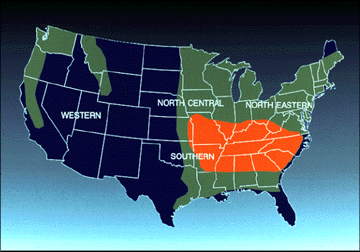
I was fortunate to be able to attend the Joint Annual Meeting for the American Animal Science and Dairy Science Societies this past July. It was an excellent opportunity to hear top researchers from all over the world. One fascinating study conducted in Kentucky examined how predicted climate change would affect pasture quality and forage output. Climate experts predict that Kentucky and others in the temperate transitional zone will experience increased ambient temperature and precipitation in the coming years. Let me briefly tell you about the study and its implications.

The researchers at the University of Kentucky designed a study to simulate both increased temperature and increased precipitation. They created plots using mixed species forages. Some had no treatment, some received only additional water, some had heaters placed around the plots to uniformly heat year-round, and some had heaters in addition to increased water. These treatments were replicated over 5 years.
They found that there was a species shift toward more warm-season grasses in the heated plots but that cool-season grasses dominated in the spring. Overall the biomass collected from all of the plots did not differ and overall forage quality was not impacted by treatment. The treatment plots were more bio-diverse with more of a mixture of both warm season and cool season forages. Also, the higher temperatures favored endophyte-infected species of fescue as they were more heat-tolerant than endophyte-free varieties.
The take home message from this study is that our pastures will be able to adapt to climate change with little impact on total forage production as long as we allow for biodiversity in our pasture systems.

Tall fescue growth indicated in red
Cattle producers in the fescue belt may see an increase in fescue-endophyte-related issues as increased temperatures further select for endophyte-infected varieties. Use of fescue-specific products that address the negative effects of the fescue endophyte such as CRYSTALYX® Fescue-Lyx® or CRYSTALYX® Fescue-Phos® will become increasingly important as weather patterns shift. Visit www.crystalyx.com for more information about these and other fescue-related products.

